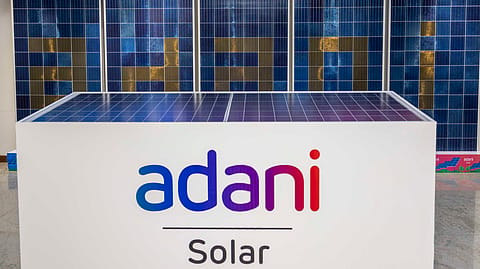Adani indictment: SECI clarifies when bidders can revise tariffs
SECI says bidders can reduce the discovered tariff if after the bidding process, tariffs have come down and no DISCOM is willing to buy at a “discovered tariff”

Amid row over its tendered project in the alleged Adani bribe controversy, the Solar Energy Corporation of India (SECI) has come out with an explanation about its "unique business model", saying bidders can reduce the discovered tariff if, after the bidding process, no DISCOM is willing to buy at “discovered tariff”.
The role of SECI, amid the developments leading to the indictment of Gautam Adani and seven others by the U.S. prosecutors, hogged the limelight as the chargesheet says Adani Green and Azure Power won the 2019 global bid at apparent “higher-than-market-price” to supply 12 GW of solar power. The bid was floated by the central PSU, Solar Energy Corporation of India (SECI), which is under the administrative control of the Ministry of New and Renewable Energy (MNRE). The SECI’s award was for 25 years and came on December 10, 2019.
SECI says amid “ambiguity” regarding its business model, it wants to clarify that the Ministry of New and Renewable Energy (MNRE) and Ministry of Power (MoP) issue “standard bidding guidelines” for solar, wind, hybrid, round-the-clock (RTC), etc., tenders.
What’s SECI’s role in tenders, auctions and pacts?
SECI, as well as other REIAs, floats tenders as per the allocated bidding trajectory using a “transparent electronic bidding method”, wherein all private or public parties are allowed to participate, the agency says.
It adds that after the e-bidding and e-reverse auction process, the “lowest tariffs” are discovered and the capacity is offered to DISCOMs across India for the power procurement.
“The same is also put up on SECI’s official website to enable various DISCOMs to avail the capacity at the discovered tariff. The DISCOMs, then approach SECI with their requirement of RE power. One bid normally consists of multiple developers and buyers. In some cases, bidders also suo-moto reduce the discovered tariff if subsequent to the bidding process, the tariff has come down and no DISCOM is willing to buy at the discovered tariff,” the agency says.
Recommended Stories
Notably, it has been alleged that both Adani Green and Azure Power cut the tariff post facto and suo motu. The first cut came 19 months later when both reduced the tariff from ₹2.92 to ₹2.54 on July 15, 2021 (from December 10, 2019) while the second cut came on November 3, 2021, when it was further reduced to ₹2.42 for Package II, III and IV.
DISCOMs, based on their internal approval process, provide consent for the offtake of power to SECI, says the agency, adding that it then enter into the power sale agreement (PSA) with them. After the PSA, it signs the power purchase agreement (PPA) with the selected bidders.
SECI says it monitors the progress of projects and helps in the resolution of issues. “Post project commissioning, SECI, as an intermediary power trader, procures the electricity generated by the projects and in turn sells it to the DISCOMs as per terms of the PPA/PSA, respectively.”
How does SECI’s involvement help?
(INR CR)
SECI says the benefit of its involvement in the projects is that due to its higher credit rating, developers can arrange better financing options, which improves the project’s viability. “Also, due to the presence of SECI as a contractual counterparty, lower RE tariffs are discovered which ultimately benefit the end consumer.”
SECI has been named as one of the renewable energy implementing agencies (REIAs) by the Ministry of New and Renewable Energy (MNRE), which aims to achieve the 500 GW target installed capacity from non-fossil sources by 2030. “SECI has never defaulted on its payment commitments to project developers even when there is a delay in receipt of payments from DISCOMs. Till date, SECI has awarded approximately 70+ GW of RE tenders.”